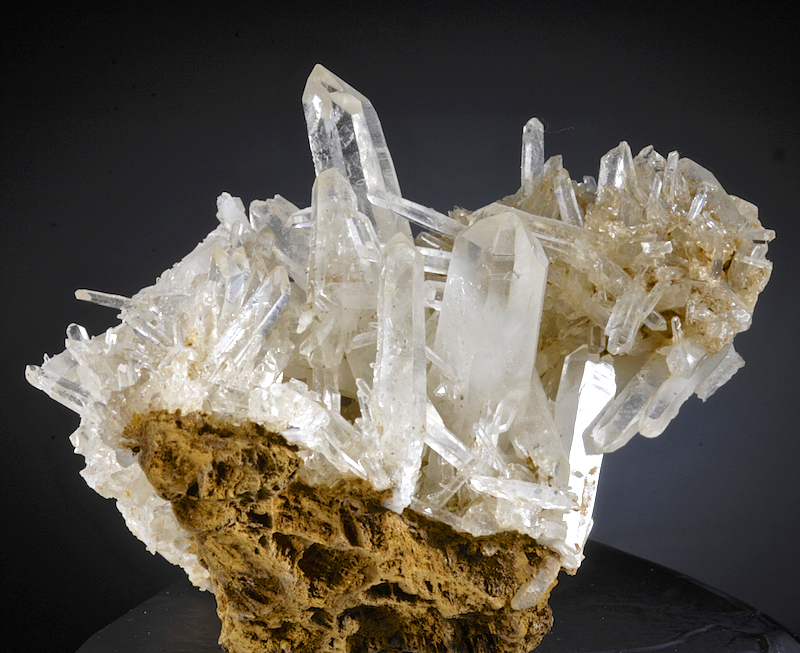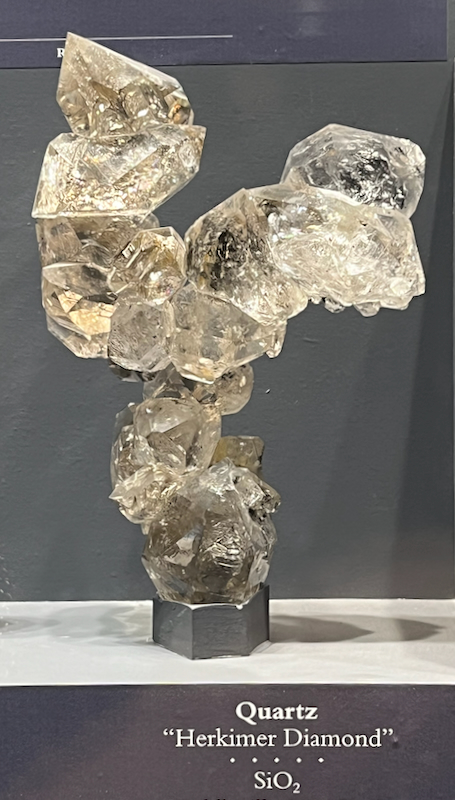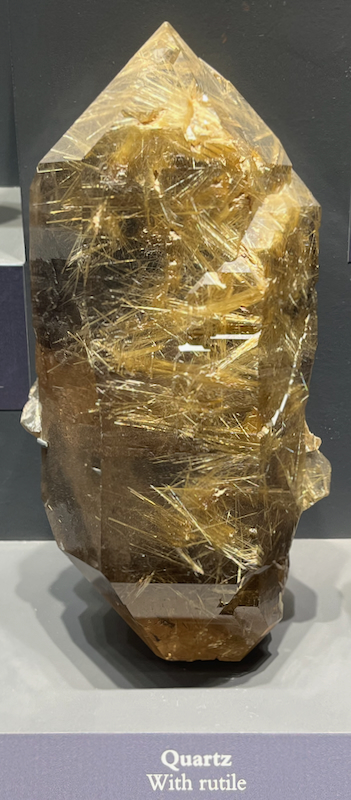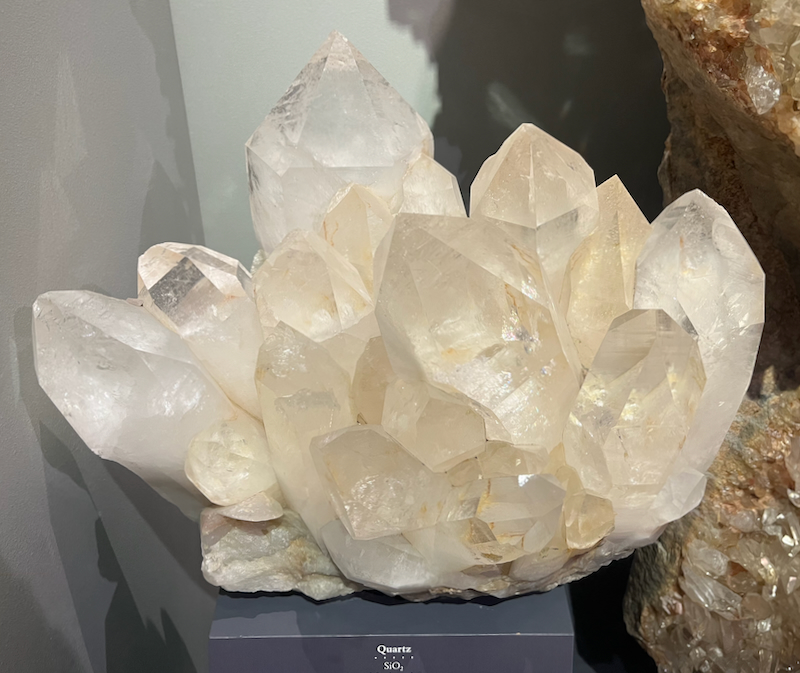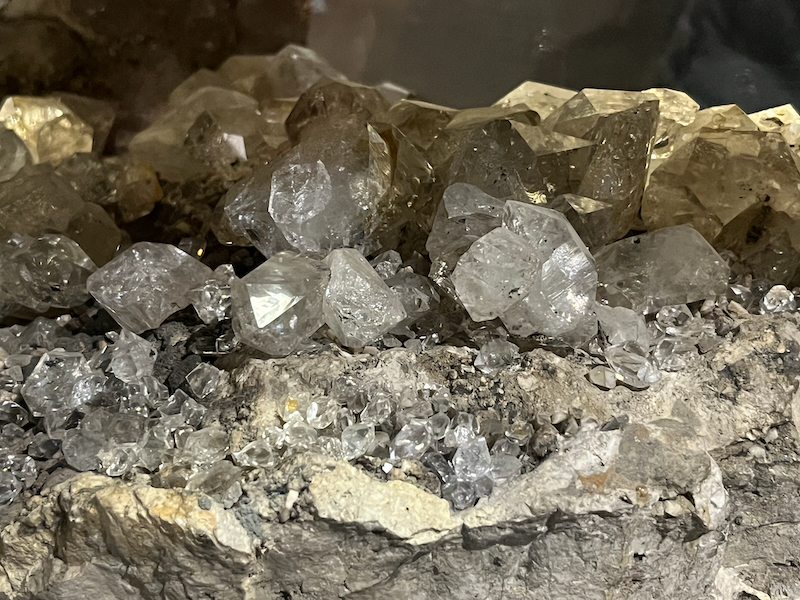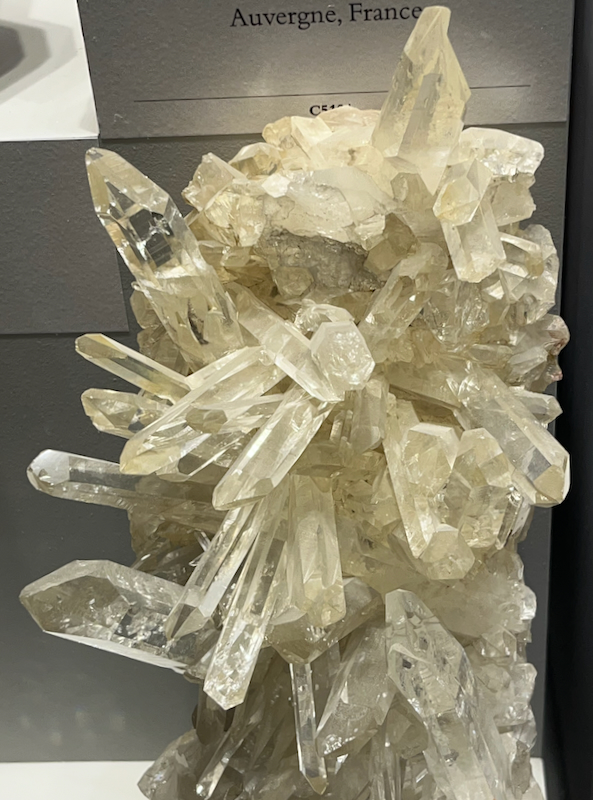Clear Quartz
Oxygen is the most common element in the earth’s crust, and silicon comes in second. Being made up of both of those elements, quartz (SiO2) is, not surprisingly, the second most common mineral on Earth. In fact, plain, clear, colorless quartz has often been called just “rock crystal” because it’s the mineral most commonly found in crystal form. It’s well known enough that it was one of the earliest minerals recognized as a “crystal,” in ancient Greece, according to the Encyclopedia Britannica. The Greeks created their word for “crystal” from their word for “ice” with quartz in mind, since both are hard and transparent, and they actually thought crystallized quartz was permanently frozen ice. Although it’s common, quartz has many special properties that make it unique and very useful. For one, its crystals have built-in electrical properties that react to pressure, allowing them to be used in measurement devices. They also will vibrate at a very specific rate (frequency) when you apply electricity to them, which allows them to be used for tuning-in radio stations, which use specific frequencies to broadcast their signals. Finally, sand is mostly made of quartz, and glass is mostly made of melted sand, so when you drink from a glass, it’s kind of like you’re drinking from a quartz crystal!
| Formula | Group or Type | Shape | Hardness | Specific Gravity | Streak | Luster |
|---|---|---|---|---|---|---|
| SiO₂ | Quartz | Hexagonal | 7 | 2.6–2.7 | White | Vitreous to adamantine |
